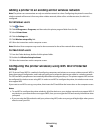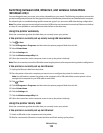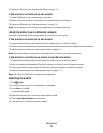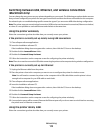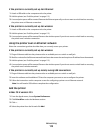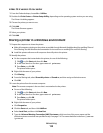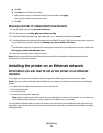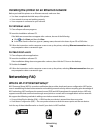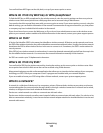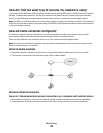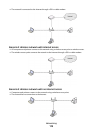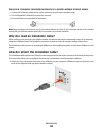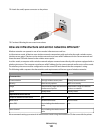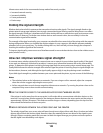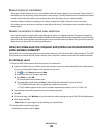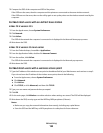You can find these WPS logos on the side, back, or top of your access point or router.
Where do I find my WEP key or WPA passphrase?
To find the WEP key or WPA passphrase for the wireless network, view the security settings on the access point or
wireless router. Most access points have a Web page that can be accessed using a Web browser.
You can also check the manual that came with your access point or router. If your access point or router is using the
default settings, you can find the information in the manual. If someone else set up your network for you, that person
or company may have included the information in the manual.
If you do not know how to access the Web page, or if you do not have administrator access to the wireless access
point on your network, and are unable to locate the information in the manual, contact your system support person.
What is an SSID?
A Service Set Identifier (SSID) is the name that identifies a wireless network. All devices on the network must know
the SSID of the wireless network or they will not be able to communicate with each other. Usually, the wireless network
broadcasts the SSID to allow wireless devices in the area to connect to it. Sometimes, the SSID is not broadcast for
security reasons.
If the SSID of your wireless network is not broadcast, it cannot be detected automatically and will not show up in the
list of available wireless networks. You must enter the network information manually in this situation.
An SSID can contain up to 32 alphanumeric characters.
Where do I find my SSID?
You can find the SSID for the wireless network by viewing the settings on the access point or wireless router. Most
access points have a built-in Web server that can be accessed using a Web browser.
Many network adapters provide a software application that allows you to view the wireless settings of your computer,
including your SSID. Check your computer to see if a program was installed with your network adapter.
If you are unable to locate your SSID using either of these methods, contact your system support person.
What is a network?
A network is a collection of devices such as computers, printers, Ethernet hubs, wireless access points, and routers
connected together for communication through cables or through a wireless connection. A network can be wired,
wireless, or designed to have both wired and wireless devices.
Devices on a wired network use cables to communicate with each other.
Devices on a wireless network use radio waves instead of cables to communicate with each other. For a device to be
able to communicate wirelessly, it must have a wireless network adapter attached or installed that lets it receive and
transmit radio waves.
Networking
117



